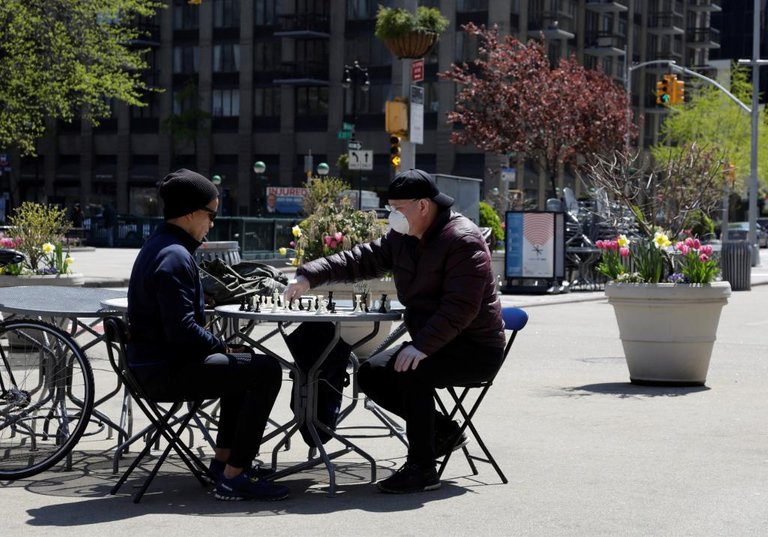A girl plays in an orphanage in India during confinement.

There is a before and after in chess, a date that marks a change of era: the defeat of Gary Kasparov against IBM's Deep Blue in New York in 1997. The golden age of sport, in a time when the world's media devoted thousands of hours and pages to covering the Herculean man-machine challenge, gave way to a more journalistically calm time. The coming world championships did not have the transcendence of the Fischer-Spassky, Karpov-Korchnoi or Kasparov-Karpov, either because of the charisma of these great masters or because any commercial program of less than 100 euros was capable of surpassing the number one without major problems.
But chess has survived by evolving and adapting to new times after almost a millennium and a half of setbacks thanks to the fact that, as Ramón Rey Ardid, a psychiatrist and Spanish champion from 1929 to 1942, defined it "is only one step above human intelligence". A sufficient step to attract and not bore, to be simple to learn, impossible to master. And in this struggle to find his place in today's society and in the world of sport he found a new promised land and his second youth thanks to education and technology.
Its introduction in education after the recommendations of the Senate in 1995 and the European Parliament in 2012 contributed to the universalization of its practice, and there are already more than half a million children in Spain in learning courses (100,000 only in the official program of the Andalusian Government) when the number of federated according to the CSD in 2018 was 28,382. Something, saving the differences, similar to athletics that has 85,401 federated (2018) and yet hundreds of thousands of people practice it as a hobby. Curiously, in Spain there were more chess federations than athletics federations from 1941 to 1960...
A game in New York these last few days.
The Internet and chess are a perfect marriage. Gone are the days when fans would go to a club, with half-hourly schedules in endless evenings of smoke, and argue heatedly about this or that position. Now, at any time of day, there are opponents of your level ready to play the electric, adrenaline-charged 1-minute games, the more restful 25-minute games or the classic 90-minute games. There are also numerous masters who give classes in virtual classrooms, simultaneous sessions and tournaments that replicate competitions at another level, such as the Magnus Carlsen Chess24.com Invitational, with commentaries in 7 languages, and number one in elite tournament broadcasts.
6 billion games per year
The Covid-19 pandemic has boosted the practice of chess as reported by portals such as Chess.com, which with almost 36 million registered users has reached in the last quarter projected figures for the decade 2021-2030, with 8.5 million games played daily. Another website, Lichess.org, stores in its database more than 2 billion games, 10% of which have been played in the last month. A realistic estimate indicates that annually, all platforms combined, some 6 billion games are played. A dizzying figure, unimaginable, though not as dizzying as the number of mathematically different games that could be played: 1 followed by 100,000 zeros!
"The growth of the practice of chess has been exponential these days," says Javier Ochoa de Echagüen, president of the Spanish Federation. "There has been a lot of demand for information and parents taking an interest in these days of confinement, since the image we project is not only associated with entertainment, but also with education and culture".
Chess in person and online is the same, but playing in three dimensions or in two - with the computer screen - makes for different sporting situations. Pressing the clock when the time crunch begins gives way to handling the mouse with skill and speed. Another example: in a live game there are no mistakes when leaving a piece on a square other than the one chosen, while in games played in cyberspace it sometimes happens that the move is not completed properly, with the consequent, sometimes catastrophic, consequences.
The question of possible cheating will need a thorough analysis by the FIDE refereeing commission, not so much because of the super-elite competitions but because of fans who may be tipped off, just like a lecturer when reading with a teleprompter. But these are youthful setbacks, the second youth of chess.
Congratulations @marisabel! You have completed the following achievement on the Hive blockchain and have been rewarded with new badge(s) :
You can view your badges on your board and compare to others on the Ranking
If you no longer want to receive notifications, reply to this comment with the word
STOPDo not miss the last post from @hivebuzz:
Vote for us as a witness to get one more badge and upvotes from us with more power!
Interesting news. I just followed you!